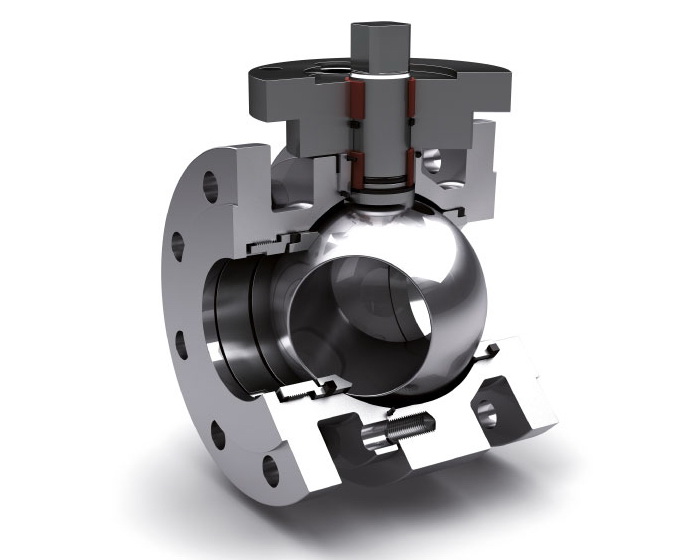Please do not block ads on our site. Clicks on ads help us exist, grow and become more useful for you!
Operating principle of the ball valve
In the crane body, perpendicular to the pipeline axis, there is a ball valve made of polished stainless steel. The valve has a through hole with a diameter equal to or close to the diameter of the connected pipeline.
In the open position, the pipeline axis and the hole coincide, and when the ball is rotated by 90°, the hole axis moves into a plane perpendicular to the flow direction, covering the passage section with the ball wall.
The sealing between the polished surface of the ball and the body is provided by fluoroplastic end rings, which are pressed against the ball by tightening bolts or spring washers.
Ball valves are controlled by a lever, a reducer, a pneumatic or electric drive.
Lever (handle) control is used for valves with a nominal diameter less than DN125, and for larger diameters, due to the high forces required to close them, they install reducer drives.
Ball valves with electric drives are used for two-position regulation, remote control of fittings located in hard-to-reach and remote places, as well as for automation of the technological process.
A ball valve is a shut-off valve and is not designed for proportional control of the medium flow and should not be operated with partial ball rotation. Otherwise, the tightness of the flow closure will not be ensured due to the abrasive wear of the ball.
To open a ball valve, it is necessary to rotate the stem by 90°, which requires significant torque, so electric drives for ball valves are equipped with gear mechanisms with a large gear ratio, which significantly complicates the design and increases the cost of the drive.
question : comment : feedback
331
 Catalog of
Catalog of of ball valves
IVR
IVR
IVR
Genebre
Genebre
Breeze
Breeze
Breeze
Breeze
Ayvaz
Danfoss
Brandoni
Brandoni
Vexve
Vexve
Vexve
Vexve
Vexve
Vexve
FAF
FAF
Bray
LD
LD
Polix
Polix
Polix
Ukspar
Broen
Broen
Danfoss
Brandoni
IVR
Naval
Naval
Polix
Polix
FAF
Маршал
Маршал
Маршал
Genebre
Krom Schroder







 ISO 5211
ISO 5211
